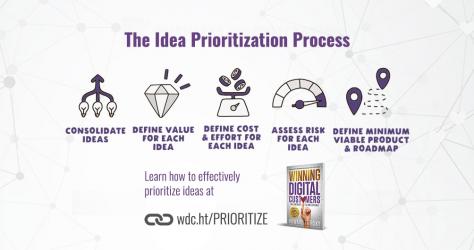After the ideation process is complete, your number of ideas is potentially quite large, so this chapter outlines activities that can help you identify the best ideas and then ensure they will work effectively. The post-ideation process is composed of the last 3 steps of design thinking, starting with Ruthless Prioritization. DT2.0 expands the model of prioritization to be more comprehensive than in classic Design Thinking, incorporating the original concepts of Desirability, Viability, and Feasibility as well as adding additional considerations such as Risk and Confidence Level.
After prioritizing your ideas based on value, cost/effort, and risk, you’ll define a minimum viable product and roadmap, which entails making decisions about what is “in” and what is “out” for the actual product. Then, you move onto Prototype & Test, where you build out a prototype according to the three dimensions of prototyping: mission, scope, and fidelity. Then, you test the product with users based on the mission defined in your prototyping step. The exact format of user testing can vary based on the type of prototype, as well as the type of user. Once the results of prototyping and testing have been used to iterate the product vision, it’s time to build and launch the MVP, or minimum viable product.

